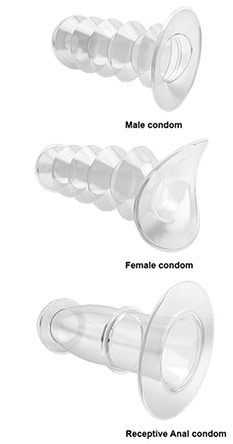Changing the world, one condom at a time
 CREDIT: ORIGAMICONDOMS.COM
CREDIT: ORIGAMICONDOMS.COMThe Origami Condom has received praise and been given a grant from the Bill and Melinda Gates Foundation.
You go out with your friends, get all dressed up and you're looking good. You're busting a move on the dance floor when you catch a cutie looking in your direction. After a couple of minutes (and maybe a few drinks), you get the courage to head over and talk to her. Everything is going smoothly, and then the cutie asks if you want to head back to her place. After an awkward cab ride, you're in the bedroom (or the bathroom, or the kitchen), getting hot and heavy and thinking, “This is going great!”... until she asks the unsexiest question on the planet: “Do you have protection?”
The condom carries a lot of responsibility on its shoulders. It is one of the simplest and most effective ways to prevent against unwanted pregnancy and STIs. It's also small, durable, cheap, and it can be transported easily and discreetly. But if condoms are so great, why aren't people using them?
The Bill and Melinda Gates Foundation has started a challenge that will give a $100,000 grant to organizations that come up with ideas to change condom design and change the perceptions of condoms, making them more accessible and popular to use. The Foundation issued the challenge to help curb unwanted pregnancies and the spread of sexually transmitted infections around the world.
The Foundation is looking for the next-generation condom that “significantly preserves or enhances pleasure” — this could include creating a new design or even new materials to increase condom use around the world.
“The problem is many men don't like wearing condoms, despite the threat to themselves and their partners,” said Louis Mcnarr, media representative for the Bill and Melinda Gates Foundation. “They feel it doesn't provide the same amount of pleasure or sensation when they use them. Men would seem to rather risk pregnancy and STIs for that extra pleasure than use condoms and have a safe experience.”
The Foundation is set on changing the world's views on condoms and is ready to make the condom the desirable choice across the globe. Male condoms are cheap, easy to manufacture and distribute, and available globally.
A flood of entries have already been submitted to the challenge, focusing on providing better sensation, increasing regular use, simplifying application, and designing more appealing packaging for customers.
The Origami Condom has already garnered praise and received a grant from the Foundation. This condom doesn't look like a typical condom; it instead folds and unfolds like a piece of paper. It provides a more pleasurable experience and easier application — it slides on, as opposed to rolling like a traditional condom — making it less likely to ruin the mood.
For your idea to be considered for a grant, you must have a proposal with testable hypothesis, include an associated plan for how the idea would be tested or validated, and interpretable data in Phase I in order to be considered for Phase II funding, in which the Foundation will give you up to a $1 million to develop your condom.
Bill Gates himself has criticized the condom, saying it has gone through little innovation or improvement in its long history. The condom has been around for about 400 years with the ancient Egyptians being the first to use condoms made out of animal intestines. The condom was made out of rubber in the 1850s, then latex when it was available in the 1920s.
The material to make condoms may have changed throughout the years, but the basic shape has remained the same. “It is time now for condoms to change; that's why we are so excited that people are taking the challenge and so many new and fresh ideas are coming in to make sex not only a better experience, but a safer one,” Mcnarr said.
For more information on the Condom Challenge, go to www.grandchallenges.org.













